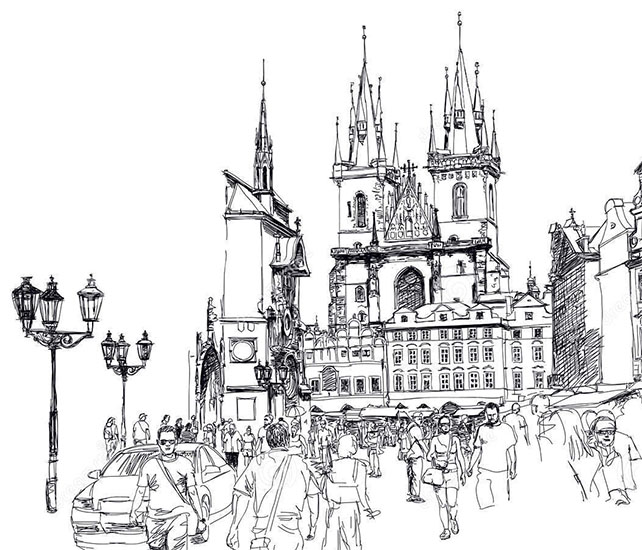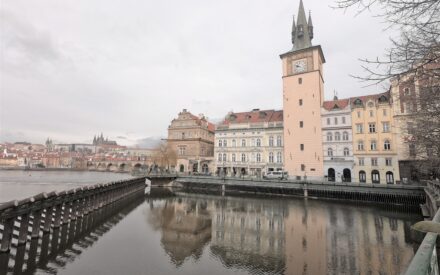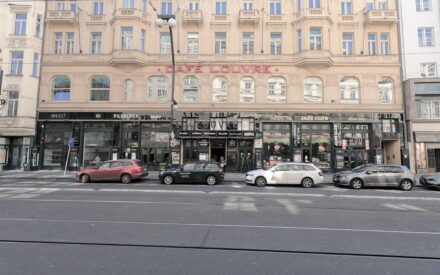
Schönbornský palác
At the far end of the Market Place (Tržiště) on the left-hand side you will find Schönborn Palace, built in 1795, which today serves as the seat of the American Embassy. This palace is one of the places where Franz Kafka lived for a time, which is why it is important to our tour. Kafka rented a two-room apartment here from August 1917, which it is possible to pin-point thanks to the many references in his diaries. It is a flat which is concealed in the upper floor behind four windows looking out over the palace garden. And at night he went to write in Golden Lane, where his sister Ottla had rented the house No. 22 (here he wrote, for instance, part of the stories from the Rural Doctor (Venkovský lékař)collection. Thanks to the notes in his diaries and letters we can attempt to reconstruct Kafka’s daily regime: Around two in the afternoon he left his place of work in Arbeiter-Unfall-Versicherungs-Anstalt (the Worker’s Accident Insurance Company) and went to his parents‘ flat in Old Town Square for lunch, read the newspapers and then went to his own apartment in Schönborn Palace during the course of the afternoon (he probably made a bit of a detour to make the most of the walk across Prague), to have several hours’ of rest. In the evening he could continue through Jánský vršek (Johannesberg) and Neruda Street (Nerudaagasse) to the entrance of Prague Castle and from here to Golden Lane (Alchimistengäßchen/Goldenes Gäßchen) where he had the necessary peace (at least through the spring of 1918) to pursue his literary work. However, he always went back to Schönborn Palace to sleep. Here, the night of 12th/13th August 1917 became memorable for his emitting blood for the first time, which lead to his being diagnosed with pulmonary tuberculosis. This event was described by Kafka in one letter from the year 1920, which he sent the Czech journalist Milena Jesenská, in the following words:
Franz Kafka: Letters (to Milena Jesenská):
The spewing of blood all started in the middle of the night around 3 years ago. I got up, agitated, like one would feel when something new has occurred (instead of remaining lying still, as they tell you to do, which I later found out), I was also a little bit afraid, I went over to the window, leaned out, I went to the sink, paced around the room, sat on the bed – still bleeding. However, I was not all that unhappy, because for some reason it was slowly dawning on me that if the bleeding stopped, I would, after 3 or 4 almost sleepless years, be able to sleep properly for the first time. It did stop too (it has not appeared again since that time) and I slept for the rest of the night. In the morning however the maid came in (at that time I had a flat in Schönborn Palace), who was very good, devoted even, though very practical indeed, and when she saw the blood she said: ”Doctor, it won’t take long for you“. But I had never felt better, I went to the office, only going to the doctor that afternoon. What happened after that is not important.
This guided walk is a part of the “Democracy on the Brink. Historical lessons from the late 1930s” project supported by the Europe for Citizens programme of the European Union.
Další místa na téma "A literary walk through Kafka’s Prague on the trail of his story Description of a Struggle"



